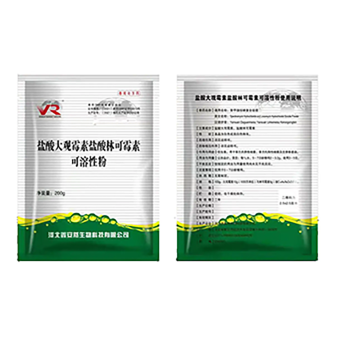- Afrikaans
- Albanian
- Amharic
- Arabic
- Armenian
- Azerbaijani
- Basque
- Belarusian
- Bengali
- Bosnian
- Bulgarian
- Catalan
- Cebuano
- Corsican
- Croatian
- Czech
- Danish
- Dutch
- English
- Esperanto
- Estonian
- Finnish
- French
- Frisian
- Galician
- Georgian
- German
- Greek
- Gujarati
- Haitian Creole
- hausa
- hawaiian
- Hebrew
- Hindi
- Miao
- Hungarian
- Icelandic
- igbo
- Indonesian
- irish
- Italian
- Japanese
- Javanese
- Kannada
- kazakh
- Khmer
- Rwandese
- Korean
- Kurdish
- Kyrgyz
- Lao
- Latin
- Latvian
- Lithuanian
- Luxembourgish
- Macedonian
- Malgashi
- Malay
- Malayalam
- Maltese
- Maori
- Marathi
- Mongolian
- Myanmar
- Nepali
- Norwegian
- Norwegian
- Occitan
- Pashto
- Persian
- Polish
- Portuguese
- Punjabi
- Romanian
- Russian
- Samoan
- Scottish Gaelic
- Serbian
- Sesotho
- Shona
- Sindhi
- Sinhala
- Slovak
- Slovenian
- Somali
- Spanish
- Sundanese
- Swahili
- Swedish
- Tagalog
- Tajik
- Tamil
- Tatar
- Telugu
- Thai
- Turkish
- Turkmen
- Ukrainian
- Urdu
- Uighur
- Uzbek
- Vietnamese
- Welsh
- Bantu
- Yiddish
- Yoruba
- Zulu
9 月 . 28, 2024 19:13 Back to list
Enrofloxacin Injection for Veterinary Use in Animal Health Management
Enrofloxacin Injection in Veterinary Medicine A Comprehensive Overview
Enrofloxacin is a synthetic antibiotic belonging to the fluoroquinolone class of antimicrobial agents. It is widely used in veterinary medicine to treat a variety of bacterial infections in animals due to its broad-spectrum activity, efficacy, and safety profile. This article will provide an overview of enrofloxacin injection, including its mechanism of action, indications, dosage, safety considerations, and potential side effects.
Mechanism of Action
Enrofloxacin works by inhibiting bacterial DNA gyrase and topoisomerase IV, enzymes critical for DNA replication and transcription in bacteria. By disrupting these processes, enrofloxacin effectively kills susceptible bacteria and prevents their proliferation. Its broad-spectrum activity covers many Gram-positive and Gram-negative bacteria, making it suitable for treating various infections in animals.
Indications for Use
Enrofloxacin is primarily indicated for use in domestic animals, such as dogs, cats, cattle, and poultry. It is commonly prescribed for the treatment of respiratory tract infections, urinary tract infections, skin infections, and certain gastroenteric diseases. Additionally, it is used in certain situations as a prophylactic measure to prevent infections in surgical cases or when animals are immunocompromised.
In veterinary practice, enrofloxacin is particularly beneficial for treating infections caused by resistant bacterial strains, as its potent antimicrobial activity often circumvents common resistance mechanisms seen in other antibiotic classes. However, its use should be based on culture and sensitivity data whenever possible to ensure optimal outcomes.
Dosage and Administration
Enrofloxacin is typically administered via injection, either intramuscularly (IM) or subcutaneously (SC), depending on the specific condition being treated and the species involved. The dosage may vary based on factors such as the animal's weight, age, and overall health. For instance, in dogs and cats, a common dosing regimen is 5-20 mg/kg once daily, while larger animals like cattle may receive higher doses depending on the severity of the infection.
veterinary enrofloxacin injection

Veterinarians should monitor the animal's response to treatment and make any necessary adjustments to the dosage or frequency of administration. It is crucial to complete the full course of treatment as prescribed to prevent the development of antibiotic resistance.
Safety Considerations
While enrofloxacin is generally well-tolerated, certain precautions should be taken when using it in veterinary medicine. It is contraindicated in young animals, particularly those still growing, as it can cause potential damage to developing cartilage. Additionally, it should be used with caution in animals with a history of seizures, as fluoroquinolones have been associated with neurotoxicity in some cases.
Before administration, veterinarians should obtain a thorough medical history and conduct a physical examination to assess the animal's overall health. Special care must be taken in cases of impaired liver or kidney function, as the metabolism and excretion of enrofloxacin may be affected.
Potential Side Effects
Although most animals tolerate enrofloxacin well, some may experience side effects. Common adverse effects include gastrointestinal upset (vomiting, diarrhea), lethargy, and allergic reactions. In rare cases, more severe reactions such as seizures or tendon ruptures have been reported, particularly in dogs.
If side effects occur, veterinarians should promptly assess the situation and determine whether discontinuing the medication is necessary. Additionally, owners should be educated about the signs of allergic reactions or severe side effects, enabling them to seek timely veterinary care if needed.
Conclusion
Enrofloxacin injection is a potent antimicrobial agent that plays a crucial role in veterinary medicine. Its effectiveness against a wide range of bacterial infections makes it a valuable tool in the treatment of various conditions in domestic animals. However, responsible use is paramount, taking into consideration dosages, potential side effects, and reservations regarding its use in certain populations. Through careful monitoring and adherence to veterinary guidance, enrofloxacin can significantly improve animal health and welfare.
-
The Power of Radix Isatidis Extract for Your Health and Wellness
NewsOct.29,2024
-
Neomycin Sulfate Soluble Powder: A Versatile Solution for Pet Health
NewsOct.29,2024
-
Lincomycin Hydrochloride Soluble Powder – The Essential Solution
NewsOct.29,2024
-
Garamycin Gentamicin Sulfate for Effective Infection Control
NewsOct.29,2024
-
Doxycycline Hyclate Soluble Powder: Your Antibiotic Needs
NewsOct.29,2024
-
Tilmicosin Premix: The Ultimate Solution for Poultry Health
NewsOct.29,2024













